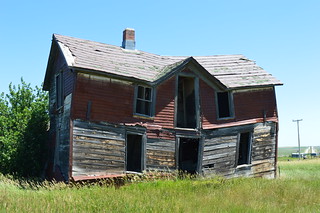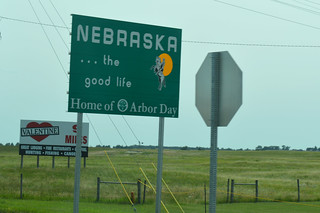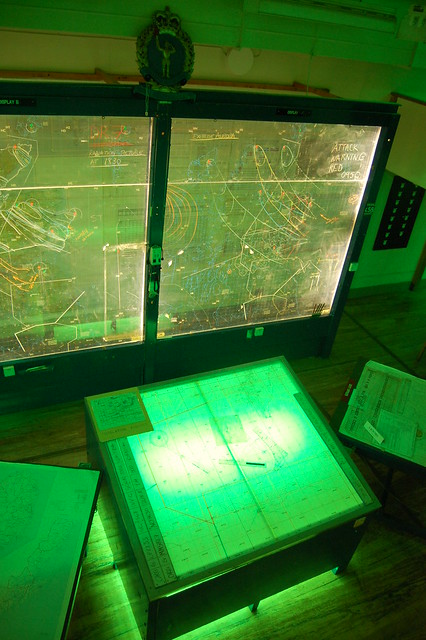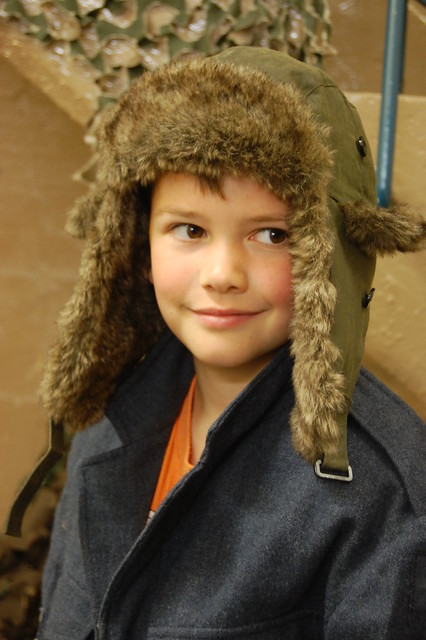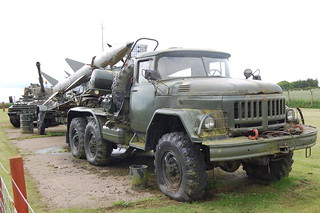When you think of South Dakota, do you think of the Cold War and missiles? No. Me neither. Mr Pict, however, does. For that reason, on the day we bade farewell to our temporary log cabin house, we headed to the Minuteman National Historic Site.
Mr Pict and I obviously grew up in the final decades of the Cold War and can remember pretty terrifying public information films about nuclear holocaust being shown at school. Our sons, however, don’t have that context or understanding so first port of call was to the Visitors Center. We handily arrived just as the video was starting. The kids learned about the use of missiles as a deterrent, about false alarms and close calls, and about “duck and cover” training. Ultimately the only thing our youngest son could recall about the video was that “Bert the Turtle says Duck and Cover”. Better than nothing I suppose. You already know that I am no expert in military history having only the most passing interest in it. I am, therefore, probably atrociously simplifying things when I write that the Minuteman programme involved constructing silos across the sparsely populated Plains states and having each silo tube house a ballistic missile. These could be activated by staff at the control facilities. It must have been boring to man one of these facilities, having to always be on alert while ultimately not doing much each day. We learned that staff often studied for educational courses or spent their time reading.
We drove from the Visitor Center to the site of the D-09 missile silo which has been preserved as part of the historic site. We could look through the glass into the silo below and see the deactivated missile within. It was weird to imagine thousands of these things dotted across South Dakota and the neighbouring states. We did not stay long at the site as we were being devoured by vampiric flying insects.
I am a sucker for decay and rust so we took a detour to a small town called Okaton, near Murdo. While the town still has a population of about 30 people, I had steered us there because it is in large part a ghost town. Like so many American ghost towns, Okaton’s life and death was determined by the railroad. The houses were built to accommodate railroad workers and, when the railroad work moved further west, so did the people. The railroad ceased operating altogether in the 1980s which was really the death knell of the little hamlet. I did not venture off into the long prairie grass in search of the railroad tracks (see – I’m learning) but I did poke around the decaying, collapsing buildings, and the rusting hulks of old vehicles and rotting agricultural equipment. I did not risk stepping inside any of the buildings but I did poke my head and camera through doorways and interiors to get a better look. The abandoned appliances, moth-eaten soft furnishings, and peeling wallpaper were both nostalgic and poignant.
It was mid-afternoon by the time we crossed the state line into Nebraska. That was state number 37 for me! Sadly our route was boring and flat. There was not even any “roadside Americana” to divert me and cause a pit stop or detour. Our hotel for the evening was in Valentine and, while the room was spacious, it felt weird and somewhat aggravating to be back in confined quarters again. We could have headed out to see the nearby river or waterfall but the kids were just not feeling it. Therefore, having not done anything kid-friendly all day, we opted for dinner and a movie. We ate at the Peppermill restaurant where the food was good and the service excellent. Nebraska is known for its beef so Mr Pict ordered a steak which he declared to be amazing. We then went to the tiny, two screen Jewel cinema to see ‘The Incredibles 2’ and the kids then burned off some energy in the hotel pool. I, therefore, get to claim Nebraska but don’t really feel like I accomplished anything Nebraskan while I was within the state’s boundaries.



